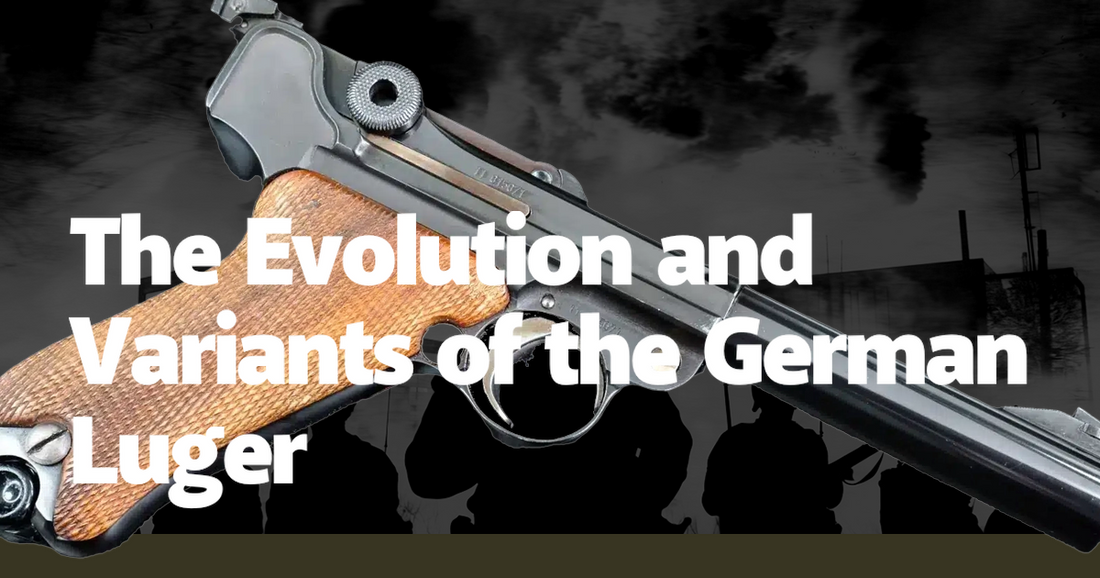The German Luger, officially known as the Pistole Parabellum 1908, is a firearm that has captured the fascination of military historians, collectors, and firearms enthusiasts alike. Its distinctive design and storied history make it one of the most iconic handguns of the 20th century. The Luger was developed by Georg Luger, an Austrian firearms designer, who took the existing Borchardt C-93 and refined it into a more practical and ergonomic weapon. The result was a semi-automatic pistol that quickly became the standard sidearm for the German military and various other forces worldwide. Its introduction in 1900 marked the beginning of a new era in handgun design, combining precision engineering with a unique toggle-lock mechanism that set it apart from other pistols of its time.
During its early years, the Luger underwent several modifications to improve performance and reliability. One of the most significant changes came in 1908 when the German military adopted the Luger as its standard sidearm, leading to the creation of the P08 model. This version featured a shorter barrel and a more streamlined design, making it easier to carry and handle. The P08 quickly gained a reputation for its accuracy and reliability, which were critical attributes for a military sidearm. Anecdotes from World War I often highlight the Luger’s performance in the trenches, where its precision could mean the difference between life and death. Soldiers appreciated its balance and the smooth operation of its toggle-lock action, which allowed for rapid and reliable firing even in the harsh conditions of the battlefield.
The interwar period saw the Luger continue to evolve, with various countries adopting and modifying the design to suit their needs. One notable example is the Swiss Luger, or the Parabellum 06/29, which was adopted by the Swiss military in 1929. This variant featured a simplified and more robust design, tailored to the Swiss preference for precision engineering. The Swiss Luger is often regarded as one of the finest examples of the Luger pistol, known for its exceptional craftsmanship and reliability. Collectors today highly prize these Swiss-made models, not just for their historical significance but also for their superior build quality.
World War II brought further developments and variants of the Luger. The German military continued to use the P08, but production challenges and the demands of wartime led to several modifications. One such variant was the "Black Widow" Luger, distinguished by its black Bakelite grips and magazine base. These changes were primarily driven by material shortages and the need for more efficient production processes. Despite these modifications, the Luger maintained its reputation for accuracy and reliability. Stories from the Eastern Front often recount German officers favoring the Luger over other sidearms due to its precision and the psychological impact of its distinctive design on both allies and adversaries.
Post-World War II, the Luger’s legacy continued as it became a symbol of both engineering excellence and historical significance. Collectors and enthusiasts sought out Lugers from various eras, each with its unique story and characteristics. The post-war period also saw the emergence of replica and commemorative models, allowing a new generation to appreciate the craftsmanship and history of this iconic firearm. The Luger’s influence extended beyond its own production, inspiring the design of other notable firearms. Its toggle-lock mechanism, for example, influenced the design of the later Mauser C96 and other semi-automatic pistols.
The Luger’s impact is not limited to its mechanical design; it also holds a significant place in popular culture. From classic war films to modern video games, the Luger has been depicted as a symbol of both the German military and the broader historical context of the 20th century. Its distinctive silhouette and unique operation have made it a favorite among filmmakers and game designers, often used to evoke a sense of authenticity and historical accuracy. This cultural presence has further cemented the Luger’s status as one of the most recognizable and iconic firearms in history.
In the realm of collecting, the Luger remains a highly sought-after piece, with certain models fetching high prices at auctions. Factors such as historical provenance, condition, and rarity all play a role in determining a Luger’s value. For example, a Luger with documented use by a notable historical figure or in a significant battle can command a premium. Collectors often seek out specific variants, such as the Navy Luger or the Artillery Luger, each with its unique features and historical context. The meticulous craftsmanship and the stories behind each piece make collecting Lugers a deeply engaging and rewarding pursuit.
Ultimately, the evolution and variants of the German Luger reflect a broader narrative of technological innovation, military history, and cultural impact. From its origins in the early 20th century to its continued legacy today, the Luger stands as a testament to the ingenuity and craftsmanship of its designers. Its various iterations tell the story of changing military needs, technological advancements, and the enduring appeal of a well-made firearm. Whether viewed through the lens of history, engineering, or popular culture, the Luger remains a fascinating and iconic piece of military heritage.

